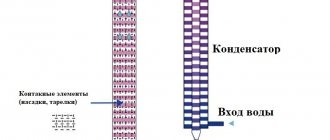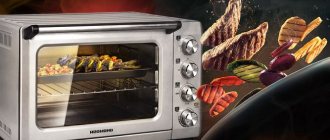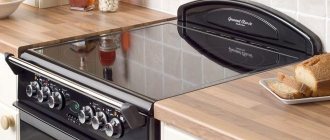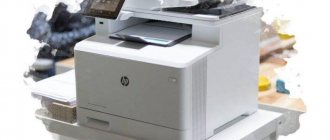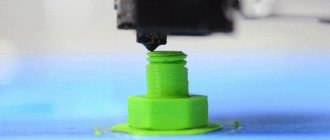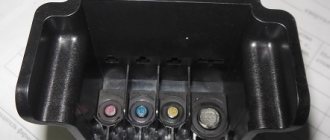Types of copiers
Multifunction device
The first type of copier is a multifunctional device. It is a technique that has three functions in one device. As a rule, this is a scanner, copier and printer.
These devices can be laser or inkjet. Multifunctional models allow you to make up to 20 copies in a short period of time. The copying method is exactly the same as on a standard copier. And in order to make several copies, you need to click on the “+” button, which is located on the panel.
Is a copier harmful to human health?
During printing, the copier emits harmful organic gases, which may contain carcinogenic substances: toluene, benzene, trichloroethane, xylene and others. Coating components for photodrums include chemicals such as silicon sulfide and selenium. When the image is transferred to paper, these substances evaporate and can enter the body.
Many employees of companies or government agencies are interested in whether the copier is actually harmful to health, and how to reduce its potential danger when interacting with the machine. The exact answer to the question was given by medical specialists and is set out in detail in SanPiN from the 2003 edition. The rules for using copying equipment are regulated by SanPiN (clause 2.2.2.1332-03):
- the distance of the device from the working area must be at least 1 m, from a wall or column - at least 60 cm;
- The cubic capacity of the room must be at least 15 m³ with an area of 6 m² - the minimum indicators for one person.
Potentially harmful exposure to copiers can be greatly reduced by following the recommendations of medical professionals.
- Ensure high-quality ventilation and air conditioning of the room.
- Use an air ionizer.
- The humidity level should be at least 55-60% (the upper limit of the normal humidity level for humans).
- Exceed the distance from the device to a person by 50% of the minimum norm established by SanPiN.
- Maintain equipment in a timely manner.
Where to buy the device
Nowadays there are many stores selling these products. But, some of them skimp on materials, as a result of which the product turns out to be of poor quality and prone to rapid breakdowns. The company https://www.technodom.kz/noutbuki-i-komp-jutery/periferijnye-ustrojstva/mfu specializes in high-quality multifunctional devices from trusted manufacturers. It is worth noting that technodom.kz. has been operating on the market for many years. Over the course of its work, the team has gained valuable experience, which it still uses in its activities to this day. Here you can purchase not only MFPs, but also:
- smartphones and gadgets;
- computers and laptops;
- photo and video equipment;
- household appliances;
- kitchen goods;
- products in the “beauty and health” category;
- products for automobiles;
- children's goods and toys;
- products for home and garden and much, much more.
Delivery and payment are carried out in a way convenient for the client. If the buyer is not satisfied with the purchased product in any way, he can return it or exchange it.
You can find out more detailed information and place an order on the company’s website technodom.kz.
Doctors' recommendations
There are also medical recommendations that can help reduce the harmful effects of the device:
- The room must be well ventilated.
- It is advisable to use an air ionizer.
- Maintain humidity levels between 55 and 60 percent.
- Install the photocopier at a distance one and a half to two times greater than SanPiN norms.
- Carry out maintenance of the copier in a timely manner.
Based on the results of all these recommendations, the conclusion suggests itself: a copier is a completely household device, but not the safest one. Fumes from chemicals involved in the printing process can lead to cancer and various types of allergies. Some employees of organizations where copiers are installed at their workplaces complain of increased fatigue, irritation of the nasopharynx and eyes, and fatigue from the constant noise of the device.
But despite the fact that copiers emit many harmful substances, the real danger to humans is their increased concentration in the air and, as a result, in the body. But if you follow the recommendations outlined above, using a copier at home will not cause any harm.
Technical characteristics of the device
The main technical characteristics include only those that affect the quality of copies.
- Permission. The indicator is measured in dpi, an alternative term is “dots per inch”. The dpi number determines the clarity of the image, and the device is not intended to improve the quality of the original image.
- Print speed. The higher the speed, the faster the operator will get the finished result. The speed factor plays a decisive role when using a copier on an industrial scale; for office or home use, the indicator is secondary.
- Number of copies per cycle. For regular use or high-volume printing, the operator can set certain print settings for one cycle, which are limited to the basic settings. The standard value is 999 copies per cycle.
- Scaling the original instance. Almost every device allows you to change the scale of the copy - enlarge or reduce. Basic functionality allows you to change the size from 25% to 400%.
All copiers are powered from the network; power consumption in standby mode rarely exceeds 50 Wh; during printing, power consumption increases to 1 - 1.5 kW/h.
The standard set of functions is found only in outdated devices or the simplest modifications. Recent developments by engineers have made it possible to introduce a number of auxiliary options into the basic kit:
- two-sided, one-sided printing;
- automatic sheet feeding;
- copying double-sided documents;
- setup via PC;
- printing from external information media;
- automatic adjustment of image contrast;
- a spacious memory unit where you can save some settings (for example, the number of copies produced);
- “sleep” operating mode (energy saving) or automatic shutdown.
A progressive solution was the combination in one body of several key functions that are most necessary for office work or printing: printing, scanning, copying. Such devices are called multifunctional devices (MFPs).
Is a copier harmful to human health?
During printing, the copier emits harmful organic gases, which may contain carcinogenic substances: toluene, benzene, trichloroethane, xylene and others. Coating components for photodrums include chemicals such as silicon sulfide and selenium. When the image is transferred to paper, these substances evaporate and can enter the body.
Many employees of companies or government agencies are interested in whether the copier is actually harmful to health, and how to reduce its potential danger when interacting with the machine. The exact answer to the question was given by medical specialists and is set out in detail in SanPiN from the 2003 edition. The rules for using copying equipment are regulated by SanPiN (clause 2.2.2.1332-03):
- the distance of the device from the working area must be at least 1 m, from a wall or column - at least 60 cm;
- The cubic capacity of the room must be at least 15 m³ with an area of 6 m² - the minimum indicators for one person.
Potentially harmful exposure to copiers can be greatly reduced by following the recommendations of medical professionals.
- Ensure high-quality ventilation and air conditioning of the room.
- Use an air ionizer.
- The humidity level should be at least 55-60% (the upper limit of the normal humidity level for humans).
- Exceed the distance from the device to a person by 50% of the minimum norm established by SanPiN.
- Maintain equipment in a timely manner.
Thus, it becomes clear that the use of the devices is unsafe. Components and fumes from a printing device that are harmful to humans can provoke cancer, allergic reactions, and their impact negatively affects the general condition of a person.
Employees of various organizations whose workplace is equipped with a copier note increased fatigue and fatigue, irritation of the mucous membranes of the eyes and nasopharynx, and nervous tension caused by the constant presence of intrusive noise.
However, one should not exaggerate the harm of devices to humans. The main criterion of danger is the concentration of chemicals in the air, and the excessive accumulation of these substances in the body leads to negative consequences. Brief use of a copier at home or in a small office is unlikely to harm a person, especially if you follow the recommendations of doctors.
Modern modifications of copying equipment have become a breakthrough in office work, the advertising and printing industries. The devices are easy to use and have clear controls. If the standards established by medical specialists are observed, the device will not harm the body and will increase labor productivity, which will improve the results of human activity.
The term “copier” has already become a common name for a conventional copying machine and is widely used in colloquial speech. This concept refers to specialized equipment for creating copies of text, illustrations, and graphics from paper media on a production scale. The main task of the machine is autonomous copying in large volumes. The copier is capable of producing an average of 999 copies per cycle, without the need for any auxiliary equipment for the operator. All control is concentrated on a small panel, where there are only a few buttons and an LCD display.
Is it profitable to buy 2in1?
The 2-in-1 hybrid has several solid advantages:
- increasing the speed of sequential scanning and printing of paper documents;
- a price that is less than the total cost of two separate devices;
- compactness - the dimensions are slightly larger than those of a simple printer.
But highly specialized equipment provides higher quality scanning or printing. Therefore, before assessing the benefits, you should determine the requirements for copies. If mediocre resolution and color rendition are an acceptable price to pay for the advantages of a hybrid, and you have to scan and print regularly, then purchasing a “2 in 1” model would be the best option. But when quality comes first, it’s better not to do this.
- Author: Maria Sukhorukikh
Rate this article:
- 5
- 4
- 3
- 2
- 1
(0 votes, average: 0 out of 5)
Share with your friends!
What you need to know when buying a printer
We will not draw the attention of readers and explain what printers are needed for. Printing documents, illustrations and photographs today is completely dependent on peripheral devices. Dot matrix printers have been replaced by inkjet and laser printers.
Still, when purchasing a printer, you need to consider some points, namely:
- Frequency of use.
- Number of printed products.
- Price and quality of the peripheral device.
Difference between copier, printer and scanner
Copiers partially overlap in their functions with such popular devices as scanners and printers, but there are certain differences between them.
A scanner differs from a copier in that it is designed to transfer text or images from paper into electronic format. This can be a text document (doc.), an image (tiff., jpg., png.) or one of the system formats. Often the option of such a technique is expanded with such useful programs as text recognition and formatting it into a specific text file, changing settings (brightness, contrast), sending a file by email or autosaving on a PC at a specified address.
Scanner
A printer differs from a copier in its functionality. The device most often works in conjunction with a PC or various gadgets; its main purpose is to transfer information from electronic format to paper. Expanding options include printing from external media or via a wireless network, one- or two-sided automatic printing. The printer is not able to correct the contents of the original document.
Copying documents
Copying and scanning documents are technologically similar in many ways. When copying a document, its text part and images in their original form are saved on paper. For a large number of copies, repeated copying is required; when “copying copies,” the quality of each new copy decreases. For large quantities of document copying, it is advisable to have high-quality equipment. A standard copier produces no more than 12-13 copies per minute; if you need to make a large number of copies of documents, the work will take a lot of time. When there is not enough time, you can transfer this task to the shoulders of professionals.
Professional archivists:
- organize documents;
- copies will be made using high-performance equipment;
- monitor the quality of copies;
- At the customer's request, we will bind documents.
Scanning documents
Single-piece scanning of a small number of documents for placement in an electronic archive does not take much time and anyone can cope with this task. Problems begin when a large amount of information needs to be converted from paper to an electronic database (retrospective conversion).
Copier concept
The concept of a photocopier is quite outdated. The correct name for this device is a copier. This device is designed to make copies of documents.
How the copier works
Nowadays, copiers have a wide range of functions. However, this has virtually no effect on the principle of operation, which consists of four main stages. This operating principle refers to the electrographic printing method.
Stage 1. At the first stage, a high-brightness halogen lamp illuminates the document to be copied.
Stage 2. Light is reflected from the document, thanks to a system of mirrors, and the image is displayed on the photo drum.
Stage 3. The image is transferred to paper by the fact that toner particles are magnetic to the photodrum and then transferred to a new sheet of paper.
Stage 4 The toner sheet is heated to a temperature at which the toner melts and is absorbed into the paper.
After all 4 steps are completed, you will get an exact copy of the original document.
It is worth noting that processing the original image also classifies photocopiers into different types. They are divided into analog and digital.
Analog devices use electrographic light, which is reflected from the original document using moving mirrors and a single lens. Then it is transferred to the photodrum.
Digital ones operate on a different principle. Here, the original is scanned using a ruler and photodiodes, otherwise called photosensitive elements. The image enters the controller's memory, where it is processed. After this, it is sent for printing.
However, in order to perform work on the device, you need to know not only how the copier works, but also how to use it correctly.
So, to make a copy you need to perform several simple operations: • put paper in the tray if it is not there; • place the original document on a special glass panel (text on glass), close it with a lid; • press the button intended to perform this operation.
The photocopier will then produce a copy of the original document.
Image acquisition methods
Despite the standard principle of operation of a copier, there are several other methods that allow you to obtain a copy.
One such method is the electrographic method. This method involves creating copies only from line originals, since the copier will not be able to make a high-quality copy from other ones.
There is also a screen printing method. It is mainly used for copying large numbers of documents.
A few more methods that are best known and often used for copying are inkjet printing and thermal printing methods. Inkjet printing allows you to make high-quality color copies. Thermal printing is carried out using high temperatures and guarantees good copy quality for a long time.
How the copier works
The design of modern copiers differs significantly from those models that were released by Xerox in the 60s of the last century. They have become more compact and much more functional.
The principle of operation of the copier consists of three main stages.
- A high-brightness lamp (usually halogen) illuminates the original sample.
- The light is reflected from the document and through a system of mirrors an optical image is formed on the image drum. In this case, negative and positive charges are formed on the surface of the drum.
- During image transfer, toner particles are attached to the drum and then transferred to paper.
The result is a copy of the original document. In one minute, the copier makes about 20 copies, therefore, it takes less than one hour to make 1000 copies. Unlike a printer, this figure cannot be called maximum, but a copier can perform the operation hundreds of times, for which it is equipped with spacious paper trays.
Structurally, the device is quite simple. As a rule, a scanning device is installed in the upper part, and a control panel and screen are located on the front side. There are paper trays at the bottom, and a tray for feeding finished copies is located in the middle.
The external design of the device depends on its technical characteristics; the standard dimensions are commensurate with the parameters of a small cabinet.
Table
| Copier | Scanner |
| What do they have in common? | |
| Both devices can read images and texts from paper and other similar surfaces | |
| The functions of both devices are often combined into an MFP | |
| A scanner combined with a printer can perform the same function as a copier. | |
| What is the difference between them? | |
| Can print copies of pages without connecting any other devices | Cannot print copies of pages - only in tandem with a printer |
| Cannot convert a few pages into digital form | Designed to convert a few pages into digital form |
Characteristics of MFP scanners
Scanner type.
A flatbed scanner is a glass surface with a scanning device underneath, covered with an opaque lid. To scan the document, place it on the glass and cover it with a lid.
The disadvantage of this type of scanner is that you can only scan or copy one page at a time.
A pull-through scanner independently takes sheets from the autofeed tray; some MFPs with autofeed can even provide double-sided scanning (or copying) of a sheet.
The advantage of a broach scanner is that you can start copying an entire stack of documents with one click of a button.
Minus - the sheets do not need to be stapled. If you need to scan the pages of a book, you will have to expand it. However, on most of these MFPs you can open the cover with the autofeeder and gain access to a regular flatbed scanner. And use it to scan a page from a book without embroidering it.
If you often scan multi-page documents, pay attention to the scanning speed of the MFP - it can be either higher than the printing speed or lower. The scanning speed also often depends on the resolution at which it is performed - at the maximum resolution the speed may be lower than the rated speed.
A scanner's optical resolution determines the maximum number of pixels per inch of a scanned document that the scanner can distinguish.
It is usually lower than the maximum print resolution, but this does not mean that the copied sheet will be of worse quality than the printed one - one pixel corresponds to several dots of ink. Therefore, a resolution of 600x600 dpi is sufficient for scanning most documents.
A scanner with a resolution of 1200x1200 dpi can already be used for scanning microtext and photographic film. To copy most text documents, a scanning resolution of 300x300 dpi is sufficient.
What does "scan" mean?
Let's look at the process of obtaining electronic scans in more detail. To do this, it’s worth diving deeper into the operation of office equipment such as a scanner.
What it looks like and how it differs from the printer. Basic characteristics of the equipment.
- The first step is to place the source for scanning correctly in the scanner. In most cases, unless otherwise indicated in the instructions, the sheet is placed against the glass with the side where the information is printed. And also pay attention to the marks in this regard on the device body itself. These often happen and serve as hints for the right actions.
- “Inside” the scanner there is a special lamp, which is driven by a separate motor.
- Along the path of light, it is reflected on the photosensitive matrix.
- Information from it is already transferred in digital format to a computer program.
- Scanning is carried out step by step in stripes. And the overall result is the compilation of all the stripes into one image.
Characteristics of MFP printers
In inkjet MFPs, the image on paper is created by microscopic droplets of ink. Printing technology determines how the print head creates pressure to push out a drop of ink:
In piezoelectric inkjet printing, pressure is generated by a piezoelectric crystal located behind the print head nozzle. Under the influence of an electric current, the piezoelectric crystal bends, creating pressure that pushes a drop of paint out of the nozzle.
This technology provides better image quality due to low spatter and the ability to control the size of the paint droplet. Piezo crystal inkjet printing is only used on Epson printers with Epson Micro Piezo printheads. The disadvantage of the technology is the high cost of the print head and, accordingly, the entire printer.
In thermal inkjet printing, a drop of ink is pushed out by a gas bubble created by heating the ink by a resistor located behind the nozzle. When electric current is applied to the resistor, it heats up to 600-650 C and the paint adjacent to it boils, forming a gas bubble.
Heads produced using this technology are cheaper, but their print quality is worse than that of piezoelectric ones. In addition, in this technology, the paint serves to cool the resistors - if one of the paints runs out, the resistor will burn out very quickly and the head will fail. Therefore, for printers with thermal inkjet printing, ink levels should be monitored especially carefully.
The print head can be located either in the printer itself or on a removable ink cartridge. The latter option makes it easier to replace a failed head, but leads to increased costs - when buying a new ink cartridge, you have to buy a new print head, even if the old one is still in good working order.
MFPs with CISS (continuous ink supply system) do not have cartridges; ink is supplied to the print head through tubes from separate containers. This greatly reduces the cost of a print, because instead of replacing expensive cartridges in an MFP with CISS, you only need to add ink to the container.
Types of printers that many have heard of, but few have seen
In addition to the usual laser and inkjet printers, there are many different printing equipment. These devices may have been talked about in the news or on public tech forums. But definitely not many were lucky enough to see them. The fact is that some of these devices have not been produced for a long time or were created in a limited version. It is this type of office equipment that will be discussed further.
Letter printer - the predecessor of matrix office equipment
A typewriter is a printing machine that uses typewriter technology. The imprint is made by striking the appropriate letter on the paper through an ink ribbon. There are three types of such printers - petal, drum and ribbon. The devices are characterized by low operating speed, high noise levels and lack of graphic printing. However, they are very reliable and durable in operation, and also have the print quality typical of printing houses. Previously, letter printers were popular for use in accounting. Now these devices are very rare (they are either remnants from the past, or were produced in a single copy to perform specific tasks).
Teletype printer (teletype) - a block of electrical mechanisms for transmitting information
A teletype printer (teletype) is an electromechanical machine designed to transmit text information and then print it onto paper. Such devices were actively used at the beginning of the last century. But even now, some countries have found use for them (for example, in shipping, interbank accounting, aviation and military command). True, modern teletypes no longer use a printer; the information received is displayed on the display.
Cartridgeless printer - the most environmentally friendly printer in the world
A cartridgeless printer is a printing device that does not use toner, ink, paper, or any other common consumables for printing. The operating principle is based on creating a print with a special thermal head on a thin plastic sheet. The sheet is reusable (it is automatically cleaned the next time it is installed in the device). The printer was developed by the Japanese company PrePeat in order to reduce the negative impact of office equipment on the environment. The main disadvantage is the high cost of printing (the cost of a printer and 1000 sheets for it will cost about 500,000 rubles).
Photon printer - old-new printing technology
A photonic printer is a large-sized printing laboratory that uses waves of different lengths, independent streams of photons, as a dye. Printing is carried out only on special photo paper. Such units are suitable exclusively for production and studio printing. The technology is far from new. But due to the high cost of production, it remained on the margins of the printing equipment market. At one time, the brands Durst, FujiFilm, MCI, Ricoh and many others were involved in the creation of photo laboratories. Today, you can only try to order a photonic printer from LumeJet (in 2014 they introduced the new S200 model).
Based on the information provided in this article, we can conclude that any printer has both advantages and disadvantages. Therefore, when choosing office equipment, first of all, consider what you will use it for and whether it can cope with the tasks.
Works independently
If the company’s archive is electronic, or you plan to create one soon, you can hardly do without a scanner. It’s worth thinking about how convenient it is: each digitized file is immediately sent to the required archive folder.
And before that, the virtual copy can be processed in a specialized program. Let's say, find out fuzzy text or change the brightness of a picture.
Moreover, scanning documents will make it possible to quickly distribute them to many subscribers.
Comparison
The main difference between a copier and a scanner is that the first is not suitable for converting read images and texts into a graphic file, and the second cannot perform the function of copying the corresponding content (but this is possible if a printer is used along with the scanner).
It is worth noting that in the modern digital technology market, the most widespread (along with copiers, scanners and printers) are multifunctional devices - MFPs, which combine the functionality of all three noted devices. At the same time, the quality of performance of each MFP function in most cases is not inferior to what characterizes the capabilities of any individual device listed above.
Having determined what the difference is between a copier and a scanner, let’s enter the criteria we have identified into a small table.
Additional functions
Each copier manufacturer strives to add to the basic functions additional options that make working with this device easier, and most importantly, save time:
- automated feeding of each sheet;
- one- and two-sided printing;
- the ability to configure the device via a personal computer or laptop;
- copying documents on both sides;
- printing from a flash drive and other gadgets;
- changing image contrast;
- automated shutdown or “sleep” mode;
- a memory unit that has the ability to save a number of settings.
The cutting-edge achievement was the combination of scanning, copying and printing, together with the considered additional functions, in the body of a single multifunction device (MFP). These 3 in 1 devices are very popular in the market due to their wide range of features.
MFP from Epson brand
Ink MFP Selection Options
If you want to get a color printer, scanner and copier at a minimal price, choose among inexpensive inkjet MFPs. But keep in mind that an inexpensive MFP is expensive to maintain - the included cartridges can be of reduced volume and will last for just a few sheets, and new cartridges can cost about the same as the MFP itself. Before purchasing, it would be useful to find out the cost of a set of cartridges and find out whether refilling them is possible (and how difficult it is).
If you are going to use an MFP quite often and want to reduce costs as much as possible, choose among devices with CISS.
Which printer is better to choose?
Analyzing printer models, many users come to the decision of purchasing an inkjet printer. And this is a completely reasonable decision. It is worth noting some advantages of inkjet printers, they are:
- satisfactory price;
- optimal prices for ink in comparison with laser printer toner, one bottle is enough for several refills;
- color print.
Classification of copiers or copiers
Copiers are presented in a wide range. Each model differs from the other in various characteristics. There are two types of equipment: 1. with movable glass; 2. with fixed glass;
Devices belonging to the first group have glass that moves along the lamp. The document is located on this glass. This type is very compact to use, but it is worth remembering that the glass may go beyond the limits of the equipment.
Copiers with a fixed glass assume that the lamp will move along the document. This technique can make many more copies and also allows you to adjust the scale of the copy.
In addition, copiers can also be classified by size. According to this criterion, portable, desktop and productive stationary models are distinguished. The technique also differs in color rendering: black and white and color. According to the paper format, copiers can be A4, A3 and A2.
How to save scanned documents
Some “native” applications for MFPs do not save scanned files, but simply open them in an application for viewing images. With this option, you simply press the key combination “Ctrl+S” and select the folder where the document should be placed. It is better to install software that has been tested by other users and can save photocopies automatically. Adobe Reader or DjvuReaser are popular among people. Simply set the image format and storage location.
The device may scan your file with black margins, and before saving them to your computer, be sure to trim them off in the editor. The standard resolution is 150 dpi, for official references it is 300. The size of the final file is affected by the format in which you saved the electronic document, for example, jpg has the smallest value, and tif and bmp are much larger.



